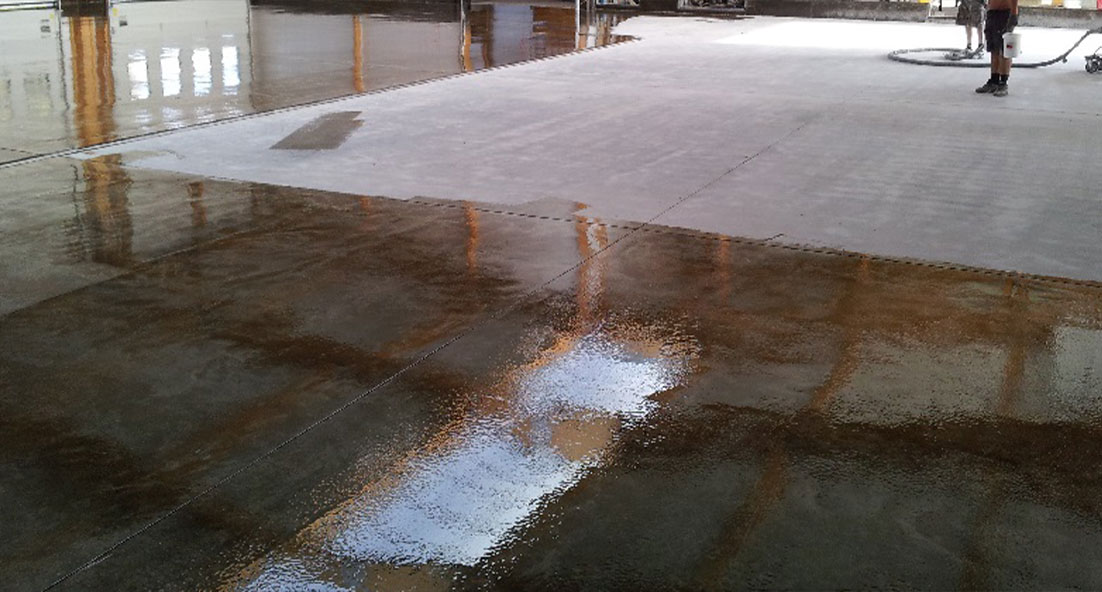
Let me start by saying that you must at the very least visually inspect the concrete for moisture, looking for damp or wet spots on the floor. Look at various locations as moisture conditions can vary a lot, taking particularly interest near exterior walls and expansion joints. Further into the room, take particular notice where holes have been drilled into the floor or perhaps where an old wall used to be. These are common areas where the damp proof membrane may either never have been and/or been damaged.
If you don’t want to purchase a moisture meter then a simple method to establish the presence of damp is to tape a sheet of thick polythene to the floor. It doesn’t have to be huge and an ideal size can be something like 1m x 1m. Make sure the sheet is completely sealed to the floor.
Check the sheet after about 24 hours. If beads of water show on the underside of the sheet, this will prove there is sufficient water vapor present to interfere with the adhesion of a coating system and it is important that this rising damp be eliminated prior to the application of any coating or screed system – see Polycote DPM Primer.
Psst….just by the way, a rubber car mat (or entrance mat with a rubber backing) can sometimes suffice too…!
However, as described in ASTM Method D 4263, the preferred (and most professional) test method would be the use of a moisture meter and as far as this guide is concerned I hope it is obvious to say that our simple advice is to follow the instructions sent with the particular meter purchased!
However, (and without wishing to confuse you), we MUST make the following point clear, that nothing is fool proof and even a meter can give inconclusive results…! Unfortunately, No ‘moisture meter’ of any type can give an accurate ‘moisture’ readings every time due to the many and varied conditions of room and densities of concrete. The typical ‘moisture’ meters available have two pins that measure moisture by changes in electrical resistance. However, differing chemical and physical properties that have nothing to do with moisture can wrongly influence the meter readings.
To further complicate matters; what may be relatively dry on the surface can be a whole lot worse lower down within the substrate. What you may not realise is that the damp is consistent slowly and quietly rising and due to an insignificant amount is constantly evaporating. Should you desire to coat and seal the floor, this can have the effect of making the floor sweat and draw the underlying dampness up through the slab in the same way as the plastic sheet as mentioned above.
Our advice is that wherever there is a possibility of rising damp, do not ‘take a chance’ but apply Polycote DPM Primer to seal the surface, even before installing a screed. Believe us, we’ve seen whole screeds delaminate and lift up from the original slab, all caused by water pressure. Click on Polycote DPM Primernow and see what it can do for you.
